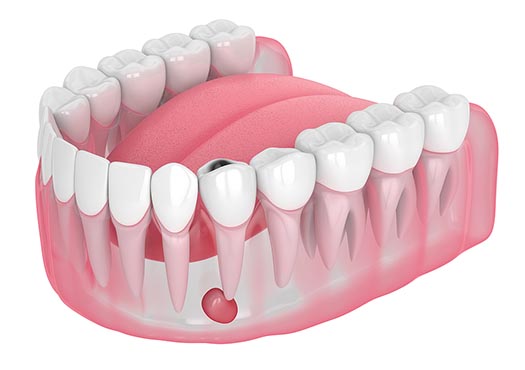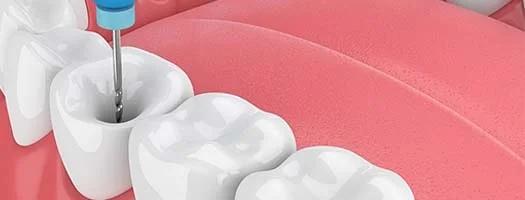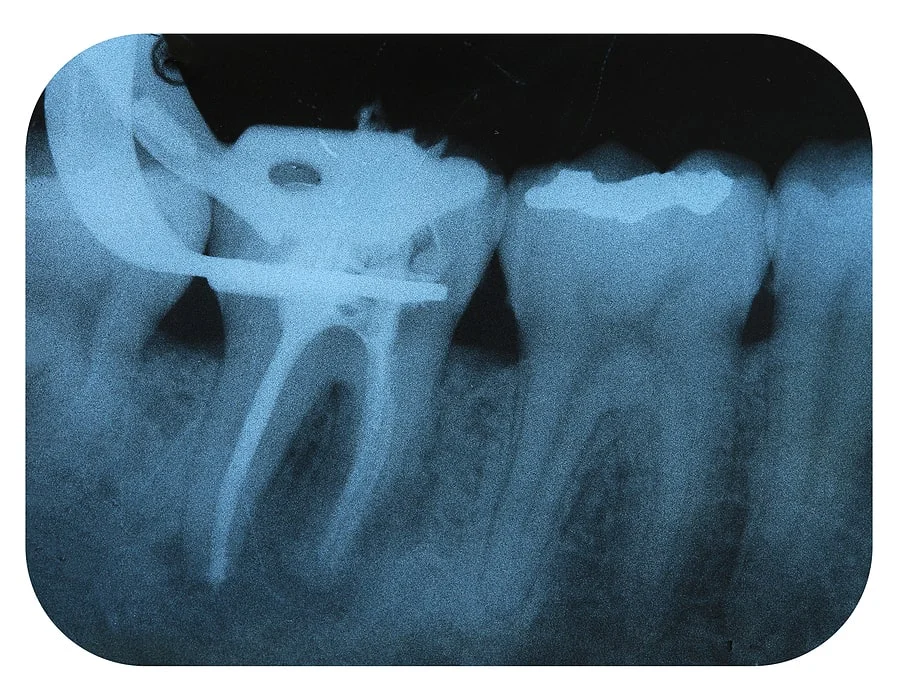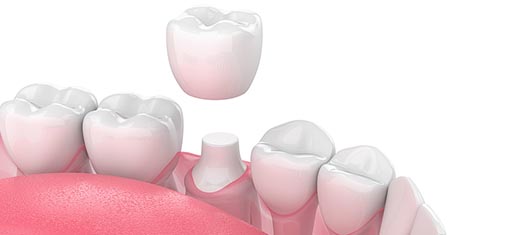Endodontic Treatment
Sometimes teeth that have been damaged by deep decay or have become infected or broken, can only be saved through Endodontic treatment (root canal treatment).
Root canal treatment is a dental procedure used to treat infection at the centre of a tooth. Root canal treatment can save a tooth that may have otherwise had to be removed completely. It can also protect the tooth from future infections.
Before your root canal treatment, you will be asked to come to the practice for an initial consultation. Once your tooth is assessed, the analysis will be made and treatment will be discussed with you. Treatment often only takes one appointment with the general dentist.
However, if there are large infections, curved canals or multi-canals and the procedure is complicated, we recommend you see Dr. Nadia Tawfik; she is one of our dentists who has a special interest in Endodontics. The treatment appointment will then last 2 to 3 hours, depending upon the complexity of the procedure. During treatment, Dr. Nadia will use an endodontic microscope which allows her to see the minute details contained within the tooth/teeth.
During root canal treatment, the dentist will remove the infected pulp and nerve in the root of the tooth, which is then cleaned. They will then fill and seal the space. Afterwards, your dentist will place a crown on the tooth to protect and restore it to its original function.

Endodontic Treatment Process
1- Cleaning the root canal
Firstly, the dentist removes everything inside the root canal.
With the patient under local anaesthesia, a small access hole on the surface of the tooth is made and the dentist will remove the diseased and dead pulp tissue with very small files.

2- Filling the root canal
Next, your dentist cleans, shapes and decontaminates the hollow area, using tiny files and irrigation solutions. Then, the tooth is filled with a rubber-like material, using adhesive cement to seal the canals completely. After root canal treatment, the tooth is dead. The patient will no longer feel any pain in that tooth because the nerve tissue has been removed. The infection would have been eliminated.
3- Adding a crown or filling
As a result of this treatment, the tooth will be now more brittle than it was before. A tooth with no pulp must receive its nourishment from the ligament that attaches the tooth to the bone instead. This supply is adequate, however over time the tooth will become more brittle, so a filling (preferably, a crown) is needed to offer protection. Until the crown is complete, the patient will be advised to not chew or bite on the tooth. Once in place, then the person can use the tooth as before.

If you would like to find out more about our implant treatments, then please contact Surrey Dental Practice on 01483 506277 and book an appointment today. We offer 0% finance on any treatment over £500* to help you to spread the cost of the treatment.
